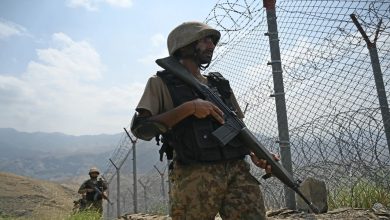New York Sewerage System Collapses Due to Torrential Rain

Most subway stations and expressways shut down including New York Sewerage System; parts of New Jersey also inundated—over eight deaths reported. Authorities in Virginia, Maryland, and Pennsylvania issued weather warnings.
With New York Sewerage System collapse, the United States continues to reel under back-to-back natural disasters. After wildfires in California and catastrophic floods in Texas, now torrential rains have battered the states of New York, New Jersey, and North Carolina.
In North Carolina last week, heavy rainfall left at least 60 people homeless and six dead. Meanwhile, ongoing rains in New York and New Jersey have claimed two lives so far. Texas floods have already killed 134 people and left over 100 missing. Wildfires in California have displaced more than 10,000 residents.
A video circulating widely on social media shows New York City’s subway tunnels completely flooded. Rohit Aggarwala, New York City’s Chief Climate Officer, told The New York Times that five of the most intense storms in New York’s history have occurred in just the past four years. He emphasized that as global temperatures rise, the intensity of weather events is also increasing.
He added, “New York’s sewerage system, which is more than 100 years old, is designed to handle around 1.75 inches of rain per hour. But it is not equipped to handle the recent deluge.”
In recent days, New York City has experienced some of the worst rainfall in its history. Commuters were seen wading through waist-deep floodwaters in subway stations. Key transportation routes, including the Saw Mill River Parkway and Cross Bronx Expressway, were shut down due to flooding. According to the New York City Emergency Management Department, floodwaters have reached tunnels, streets, and subway stations, overwhelming the outdated drainage infrastructure.
The rainstorm began on July 14 and has continued intermittently across New York and New Jersey. In response, New Jersey Governor Phil Murphy declared a state of emergency and advised residents to stay indoors and avoid non-essential travel. Neighboring states including Virginia, Maryland, and Pennsylvania have also issued severe weather warnings.
Major airports such as John F. Kennedy International Airport (JFK), LaGuardia Airport, and Newark Liberty International Airport temporarily suspended flight departures due to the storm’s intensity.
Dozens of flights were cancelled or delayed, leaving many passengers stranded. Public transportation networks across the region have also been severely disrupted. Staten Island is reported to be among the hardest-hit areas, receiving between 10–15 centimeters (4–6 inches) of rain overnight.
While the city’s emergency alert system attempted to inform residents in real time, the warnings came too late for many areas already experiencing severe flooding. Commenting on the crisis, New York City mayoral candidate Zohran Mamdani said, “New York is facing one of its worst situations in recent memory. If the rains persist, the city may suffer irreparable damage. It is urgent that we invest in modernizing the sewerage and stormwater infrastructure.”
Communities across the Northeastern United States have long been vulnerable to flooding. The National Weather Service has forecast continued heavy rainfall across the Mid-Atlantic and Appalachian regions, warning of potential further flooding in the coming days.




